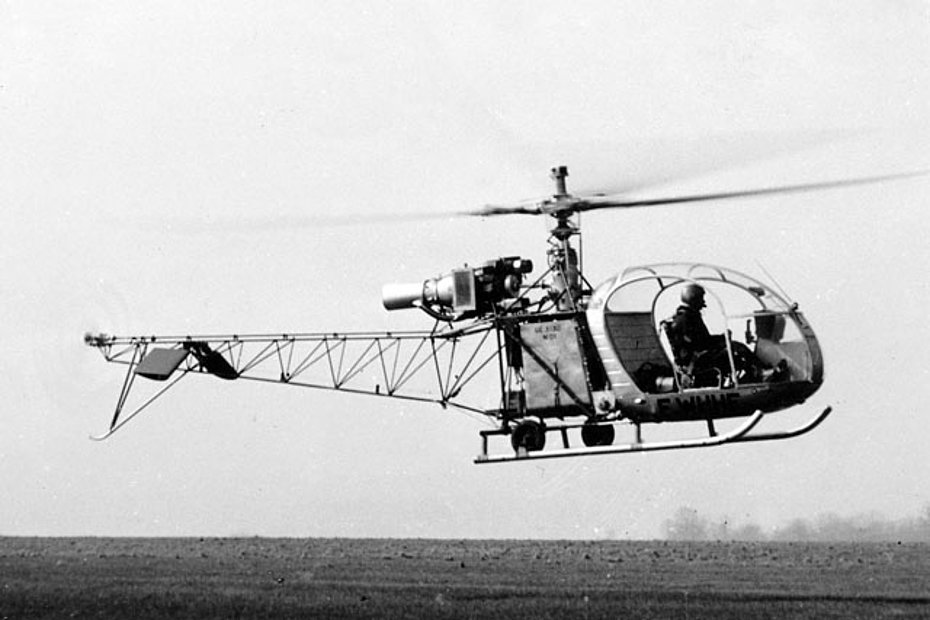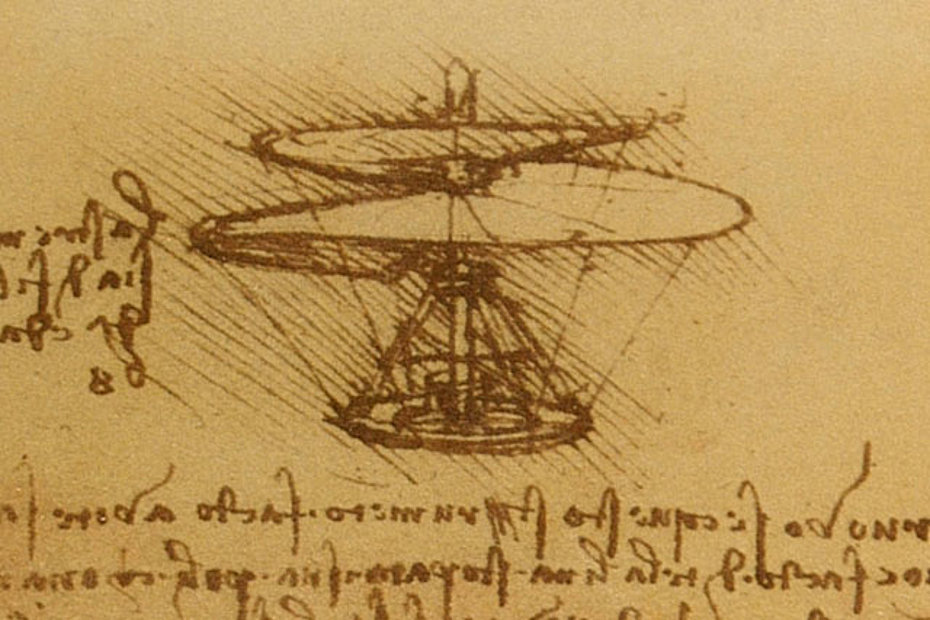
From dream to reality
Men have always dreamed to be able to fly like birds. Historically the first serious studious who tried to scientifically solve this problem is usually thought to be Leonardo Da Vinci (1456-1519), who left us numerous designs of flying machines. Among them there is the project of the “flying screw”, the ancestor of the helicopter. Officially the old dream became reality much later in France. In November 1783 two intrepid men did the first ascension in a balloon. In the following years others tried to fly with models “heavier than the air”, but none of them succeeded.
Gustave de Ponton d'Amécourt (1825-1888) is credited with coining the term "hélicoptère" which originated from the Greek words "helix" (propeller) and "pteron" (wing). The term "hélicoptère" first appeared on August 3, 1861, in a paper in which the French inventor applied for a patent in the U.K.
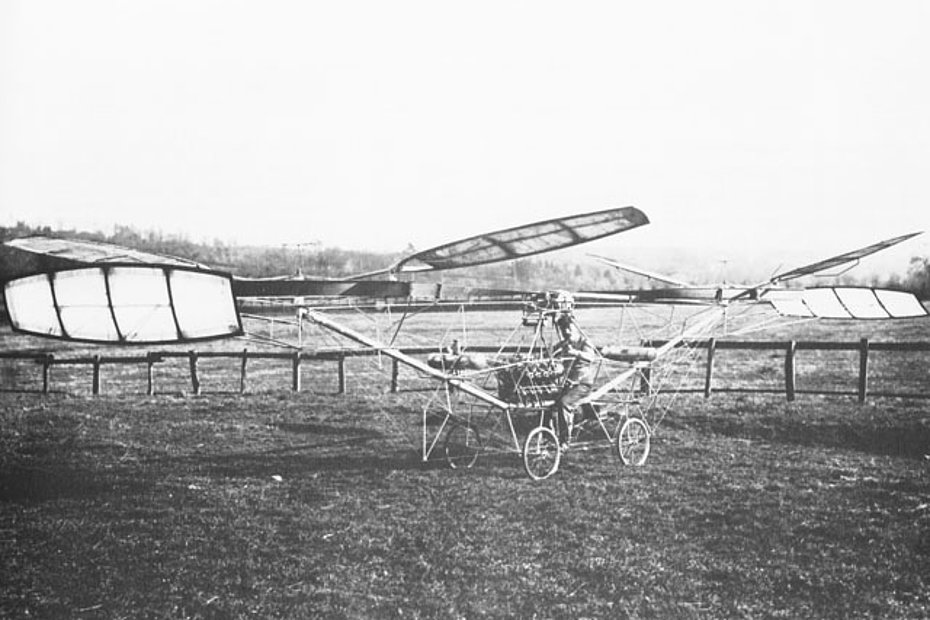
By the second half of the 19th century some inventors built models that could take the air but were incapable to lift the weight of a man. These models, powered with different engine types, were moreover totally uncontrollable.
In Italy, in 1877, Enrico Forlanini built a coaxial helicopter model equipped with a steam engine which made a vertical ascension up to an height of about 13 meters.
In November 1906 the French bicycle builder Paul Cornu made the first free flight in a helicopter that could carry a man. His helicopter was powered with a 17.8/24 kW/shp Antoinette gasoline engine and was equipped with a rudimentary control system. It took off vertically and remained in the air for about 20 seconds at an height of about 30 centimeters. Rotary-wing historians usually consider Cornu as the first who successfully flew with a helicopter.
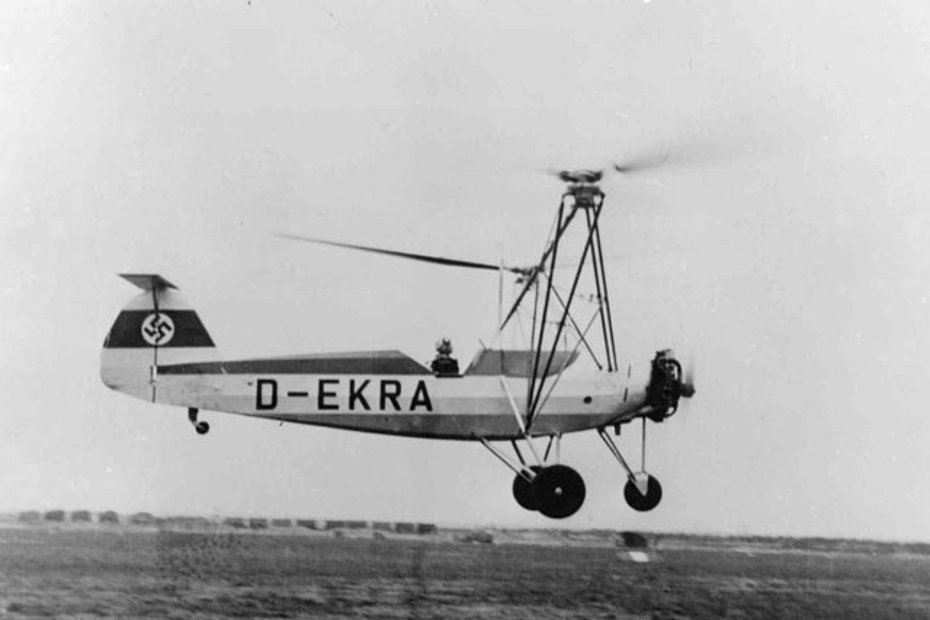
The autogyro developed after World War I by the Spanish inventor Juan De La Cierva, contributed enormously to the success of the helicopter, which was achieved much later than that for the aeroplane. Similar to the helicopter this aerodyne had a different functioning principle. In fact, in the autogyro, the rotor is driven by aerodynamic forces in autorotation and the thrust is provided by the engine-powered propeller.
Towards maturity
After the second half of the 1930s, when the first helicopters began to fly successfully, doing all the classical feature manoeuvres, the technological delay, if compared with the evolution of the aeroplane, was evident (an estimation could be about 25-30 years). Among the first models that flew successfully in that period there were the Gyroplane Laboratoire built by the French Dorand and Bréguet, and the Focke-Wulf FW-61 designed in Germany by professor Heinrich Focke.
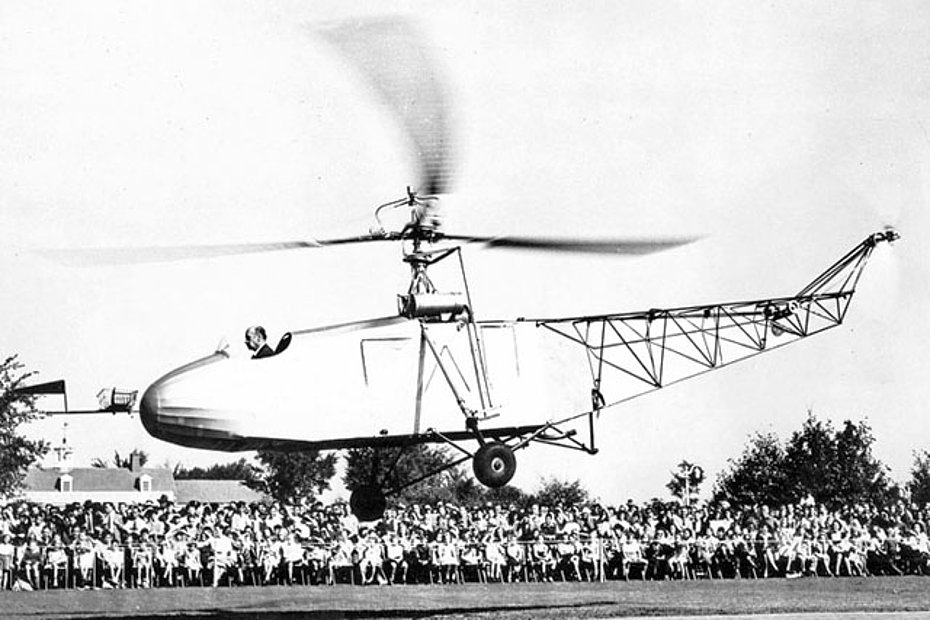
The latter model surprised the aeronautical community with its exceptional manoeuvrability. In 1938 it did a series of indoor flights in the Deutschlandhalle in Berlin, inspiring numerous aeronautical engineers in Europe and in the United States.
The first helicopter of conventional design (with main and tail rotor) which successfully flew was the Sikorsky VS-300, a model developed in the United States by the Russian emigrate Igor I. Sikorsky.
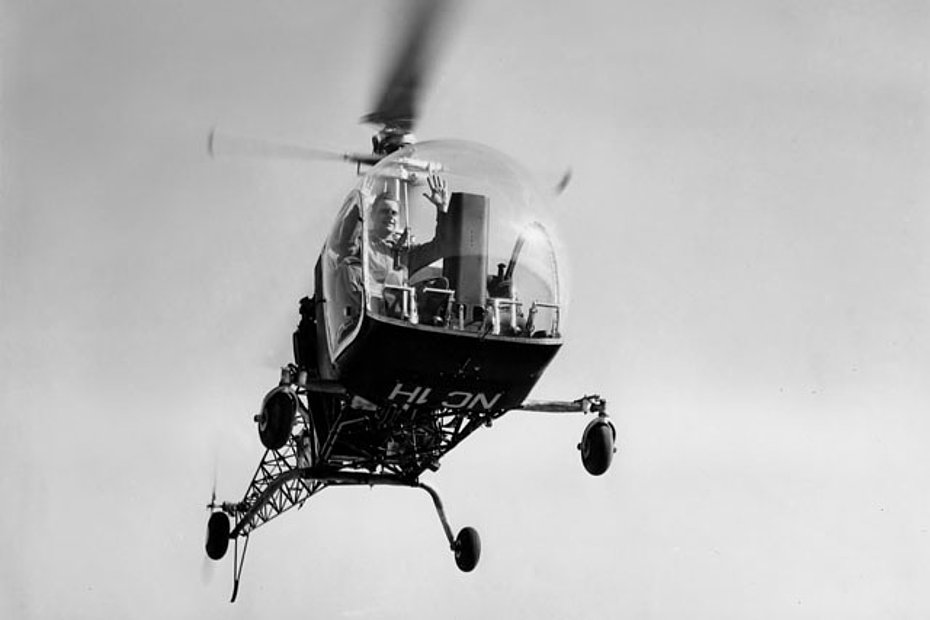
The first operative models such as the German FA 223s Drache and the Flettner FL282s Kolibri, or the American Sikorsky R-4s and R-6s, appeared during World War II. However their exploitation was limited. All these models were mainly used to test the potentialities of the helicopter. Some of them were experimentally used for rescue operations, as it happened for example, on April 4, 1945 in Burma. In that occasion a US pilot, who was forced to make an emergency landing in the forest and was seriously injured was transported to a hospital by a Sikorsky R-4B.
Despite they were produced in limited series these models gave a great contribution to the technical evolution of the rotary-wing.
Helicopters for civil use
At the end of World War II the United States were ready to start the production in series of helicopters. The first company which produced a civil model was Bell Aircraft Corporation. The helicopter concerned is its famous Bell 47. On March 8, 1946 the Model 47 was awarded the world's first commercial helicopter license. Bell was immediately followed by Sikorsky which was producing the S-51, a civil 4 seater version of the military R-5.
Thanks to its ability to hoover in mid air, make translations in the desired direction and to take-off and respectively land on small surfaces, the helicopter has found a large number of civil and military uses.
Today in Switzerland there are more than 300 registered civil helicopters (in the world it is estimated that they are more about 60’000, more than the half for military uses) used mainly to transport people and merchandise, to search and rescue, for logging, for fire-fighting, for aerial assembly of, for example, pylons, antennas or cableways, to patrol traffic, for aerial photography, to spray cultivations and forests.
The Swiss contribution to the development of the rotary-wing is very limited. Only the Dufaux brothers distinguished themselves in 1905 when their small model, equipped with two rotors and a small gasoline engine, flew successfully in Geneva.
HAB 08/2022


